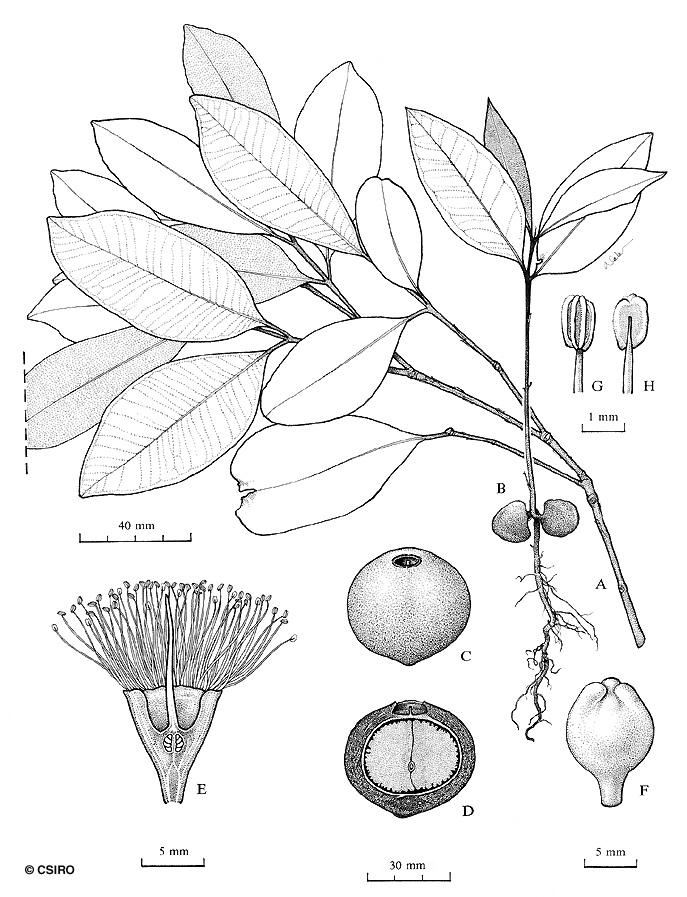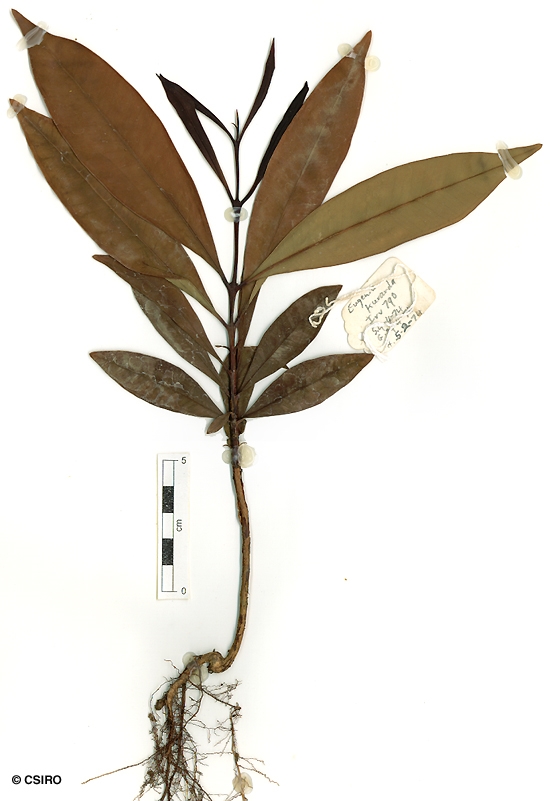Australian Tropical Rainforest Plants - Online edition
Syzygium kuranda (F.M.Bailey) B.Hyland







Hyland, B.P.M. (1983) Australian Journal of Botany Supplementary Series 9: 96.
Cherry Penda; Cherry Satinash; Kuranda Satinash; Penda, Cherry; Satinash, Kuranda; Satinash, Cherry; Watergum
Bark generally pale brown. Powdery or rotten material often present between and under the bark flakes.
Bracts deciduous, absent at anthesis. Calyx tube (hypanthium) + pedicel about 6.5-9 mm long, calyx tube (hypanthium) about 5-8.5 mm diam., calyx lobes slightly dimorphic, inner lobes slightly larger, rounded to almost orbicular, about 2-4 mm long. Petals +/- orbicular or rounded, about 4-5 mm diam., oil dots sometimes visible, about 10-20 per petal. Outer staminal filaments about 8-12 mm long, anthers about 0.8 x 0.8 mm, gland inconspicuous. Ovules about 18-24 per locule, placentas central, ovules radiating, ascending. Style about 8-15 mm long, approximating the stamens.
Fruits globular or depressed transversely ovoid and slightly bilobed (scrotiform), about 35-40 mm long and about 40-45 x 40 mm on the longer and shorter diameters, calyx lobes absent, pericarp firm, somewhat brittle, granular in texture, surface scurfy. Seeds one or two per fruit, about 20-25 mm long, about 30-40 x 20-30 mm on the longer and shorter diameters, testa adhering somewhat to the pericarp and adhering to the cotyledons by numerous peg-like intrusions, cotyledons uniformly textured except for the +/- ruminate peripheral section. Radicle central.
Fallen fruit eaten by Cassowaries. Cooper & Cooper (1994).
A very strong tree that would be good for parks and larger gardens. Flowering occurs in dense clusters along the branches.
This species produces millable logs and the timber is marketed as Kuranda Satinash, a very useful general purpose structural timber which enjoyed a good reputation in North Queensland. Wood specific gravity 0.86-0.88. Hyland (1983).





